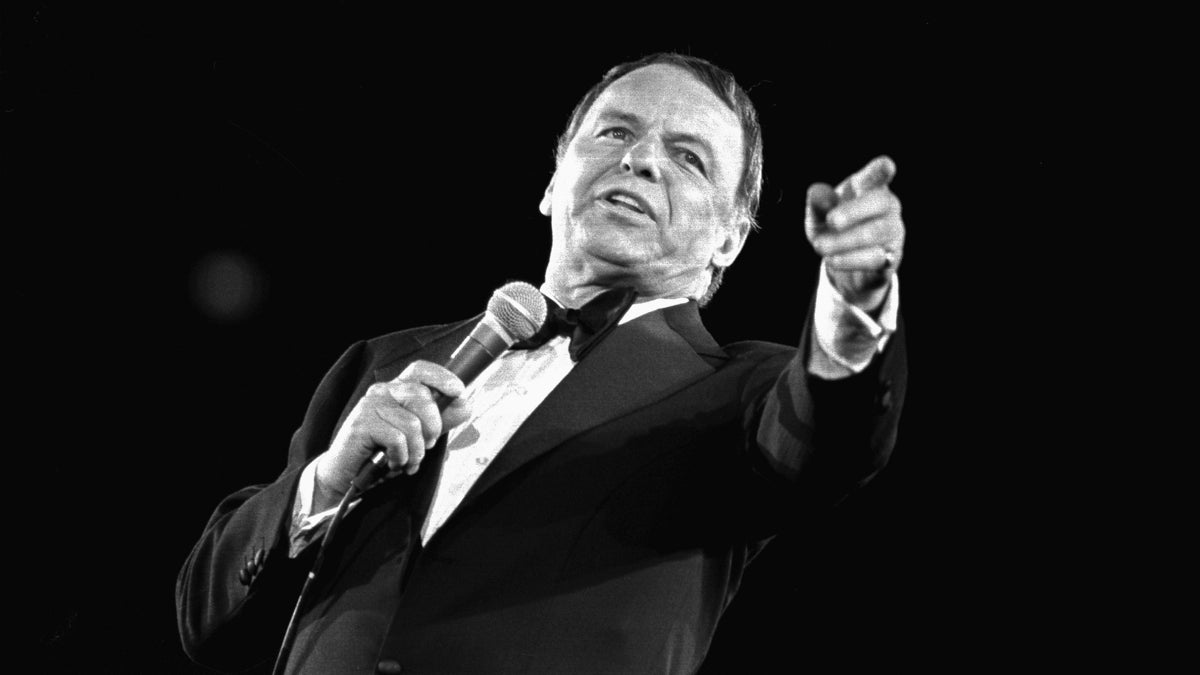Sinatra found the ‘heartbeat rhythm’
Listen
Frank Sinatra performs at the Veterans Memorial Coliseum in New York's Long Island April 9
The greatest ever crooner of romantic tunes had some science in his corner.
Let’s start with a little pop music quiz. Which of the following three pieces of music says “heartbeat rhythm” to you?
Verdi’s “Requiem”?
Gilbert and Sullivan’s “Three Little Maids” from The Mikado?
Frank Sinatra’s “One for My Baby (And One More for the Road)”?
If you chose No. 3, you were correct. Frank Sinatra’s “One for My Baby” clocks in at around 84 beats per minute, which is right in the range of the average human heartbeat. But not all the credit should go to “Ol’ Blue Eyes,” some of that is due to Nelson Riddle, Sinatra’s arranger on many of his big hits.
Ben Yagoda is author of The B-Side: The Death of Tin Pan Alley and the Rebirth of the Great American Song, and he explains, “Sinatra records with Riddle and others have probably been responsible for more American births than any other singer. So you really can’t go wrong when you talk about love and sex and Frank Sinatra.”
“Sinatra’s songs with Riddle, even the ballads, had a beat,” Yagoda adds. “That was part of what was compelling about them.”
Nelson Riddle has been quoted as saying, “most of our best numbers are in what I call the tempo of the heartbeat.” Yagoda suspects Riddle may have been speaking more metaphorically than scientifically.
“The heartbeat rhythm thing,” he muses, “my sense of it is that it’s…a good bit of poetic license.”
But for cardiologist Stephen T. Sinatra, the heartbeat rhythm in music is a very literal—and positive—thing. His grandfather and Frank Sinatra’s father grew up in the same town in Italy.
But his interest in the connection between heartbeat rhythms, music and love transcends family connections. It’s about science.
Dr. Sinatra says, “It’s something that’s interested me for the last…four decades. Scores between 60 and 140 are soothing to the heart.”
They can also connect us to different kinds of loving feelings. Let’s start with a love that we associate with the slower end of the heartbeat rhythm scale. Don’t think first kiss love. Don’t even think prom date love. We’re talking first love.
“Basically, it goes back to being in utero,” explains Dr Sinatra. “We are listening to our own mother’s heartbeat. Well, then we develop a connection. And it’s an unconscious connection. But listening to music that can simulate the heartbeat of the mother would have a calming association later on in life.”
Songs whose beats fall on the upper end of the heartbeat scale can make our hearts race in a good way. They let us feel that feeling of falling in love with someone else.
“When people are in love and when they see one another, or talk to one another on the phone, their heartbeats will increase because they’re excited,” Dr. Sinatra clarifies. “In other words, this is passion now we’re talking about.”
The next time a song makes your heart sing, you might consider its rhythm, says Ben Yagoda. “There have been scientific studies, for sure, that show specifically that music can have an effect on the human body, including heartbeat.”
“If there are songs with a fast rhythm the heartbeat speeds up,” Yagoda says. “Slow rhythm, it slows down. Crescendos, the heartbeat speeds up. So there is definitely a link.”
WHYY is your source for fact-based, in-depth journalism and information. As a nonprofit organization, we rely on financial support from readers like you. Please give today.



